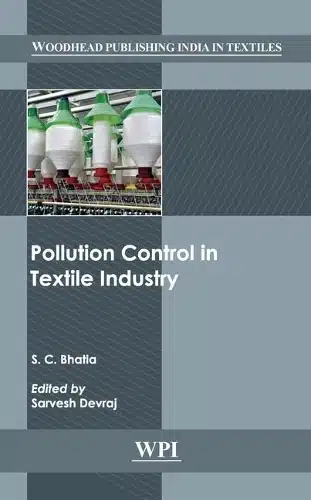POLLUTION CONTROL IN TEXTILE INDUSTRY
Publisher:
| Author:
| Language:
| Format:
Publisher:
Author:
Language:
Format:
₹3,395 ₹2,546
Save: 25%
Out of stock
Receive in-stock notifications for this.
Ships within:
Out of stock
| Weight | 789 g |
|---|---|
| Book Type |
ISBN:
Page Extent:
Textile processing industry is characterised not only by the large volume of water required for various unit operations, but also by the variety of chemicals used for various processes. There is a long sequence of wet processing stages requiring input of water, chemical and energy and generating wastes at each stage. Any industrial activity causes pollution in one form or the other and so is the textile industry. The textile industry is a significant contributor to many national economies, encompassing both small and large-scale operations worldwide. Textile processing generates many waste streams, including liquid, gaseous and solid wastes, some of which may be hazardous. Several measures for pollution control in textile industry are discussed in detail including `End-of-pipe’ technologies for wastewater treatment. This book on pollution control in textile industry summarises various aspects of pollution control and is divided into 19 chapters. This edition discusses: enzymatic treatment of wastewater containing dyestuffs, degradation of toxic dyes, biological methods of removal of dyes from textile effluents, water conservation in textile industry, recovery of dyes and chromium from textile industry, zero liquid discharge in textile industry, pollution prevention in jute industry and wastes minimisation in textile industry. A unique feature of the book are the chapters on carbon foot print and energy conservation in textile industry. Finally the role of nanotechnology for the removal of dyes and effluents in also discussed.
Textile processing industry is characterised not only by the large volume of water required for various unit operations, but also by the variety of chemicals used for various processes. There is a long sequence of wet processing stages requiring input of water, chemical and energy and generating wastes at each stage. Any industrial activity causes pollution in one form or the other and so is the textile industry. The textile industry is a significant contributor to many national economies, encompassing both small and large-scale operations worldwide. Textile processing generates many waste streams, including liquid, gaseous and solid wastes, some of which may be hazardous. Several measures for pollution control in textile industry are discussed in detail including `End-of-pipe’ technologies for wastewater treatment. This book on pollution control in textile industry summarises various aspects of pollution control and is divided into 19 chapters. This edition discusses: enzymatic treatment of wastewater containing dyestuffs, degradation of toxic dyes, biological methods of removal of dyes from textile effluents, water conservation in textile industry, recovery of dyes and chromium from textile industry, zero liquid discharge in textile industry, pollution prevention in jute industry and wastes minimisation in textile industry. A unique feature of the book are the chapters on carbon foot print and energy conservation in textile industry. Finally the role of nanotechnology for the removal of dyes and effluents in also discussed.
About Author
Reviews
There are no reviews yet.




Reviews
There are no reviews yet.